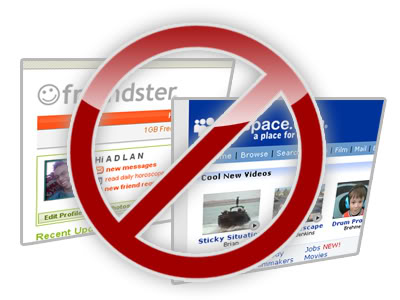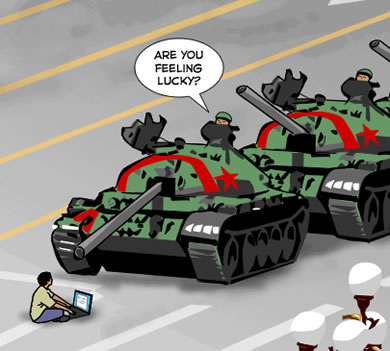- Use large font - When interacting with older employees, one must take into consideration that some individuals may distorted vision.
- Reiterate any question that an audience member may ask - Some of the participants may be hard of hearing.
- Create a comfortable environment - Ensure that the lighting, temperature and personal space are all at appropriate levels.
- Provide plenty of breaks - People get bored easily, therefore, allow people to use the bathroom or get food at a variety of breaks.
- Stay put during breaks - While the participants may get a break, the facilitator may not. The facilitator should stay in the room to allow learners to approach him/her with any questions or comments. (In other words, bring plenty of water and use the bathroom before training).
- Provide handouts - As stated earlier, learners may have difficulty with the vision. Providing them handouts of any presentation will allow them to see the content with ease.
- Arrange Chairs in a U or Circle - Using a circle or U format will allow sound to travel around the classroom easier.
- Check for clarity - Be sure to ask participants if they understand the topic or if they have any questions. Encourage participants to approach you during breaks if they feel uncomfortable asking in front of the group.
- Interactive Activities - To maintain the attention of learners, try to incorporate activities that require working together or moving around the room.
The following blog includes information pertaining to human resources, organizational development and industrial-organizational psychology. Stay up to date on the latest research by reading the summaries of published studies, editorials, and periodicals.
About Me

- Ian Mondrow
- United States
- I am a M.A. in industrial/organizational psychology. Most of my experience has been in human resources and change management. My passion lies in employee assessment, organizational development and employee opinions. Website: www.IanMondrow.com LinkedIn Profile: http://linkd.in/drBYoC
Tuesday, July 27, 2010
Catering to Adult Learners
Monday, July 26, 2010
Successful training relies on ______________.
- Use a combination of activities that encourage discussion.
- Clearly state how the training will help them succeed in their jobs.
- Start with ice-breakers or trust-building exercises to encourage open discussion.
- Instead of playing the role of a lecturer, be the facilitator. Facilitate discussion among the group and ask questions.
- Identify introverted people and encourage them to speak up. (This can be achieved by allowing people to write their ideas/answers before the discussion)
- Have the employees set goals [related to the topic] at the end of the training. Be sure that they identify a partner that will help them to achieve these goals.
- Arrange tables/chairs in a layout that encourages discussions. The following arrangements are suggested:




Friday, July 23, 2010
Private rooms for employees?

Diversity is crucial to an organization's success but at times, barriers may arise. For instance, a mother may insist that she wants to breast feed her child. It is clear that not all employees would be open to seeing her breast exposed. Other issues may include Muslim employees who need a separate place to worship, transgender employees that require hormone injections and more.
Wednesday, July 21, 2010
The HR Door

- How often do I close my door?
- Do I welcome employees to enter my office even if the door is closed?
- What are my reasons for closing the door?
- What message do I send when I close the door?
Tuesday, July 20, 2010
Who said outplacement had to be expensive?
- Information on re-entering the Workforce. Composing handbooks that contain information about job searching, resume updating, interviewing tips and more can demonstrate to others that the organization wants to assist them in their job search. Once a booklet is composed, it can be mailed to terminated employees with a letter of support from the VP of Human Resources. Another option is to e-mail a digital copy upon notice of termination.
 Resume and Cover Letter Proofing. Human Resources can offer to look at the resumes/cover letters of terminated. Depending on the size of the layoffs, this can produce a hefty amount of extra work. Therefore, schedule an hour a day where individuals can come into your office for 15 minute consultations. Inform employees that all appointments are first-come, first-serve. Encourage other HR staff to provide similar services.
Resume and Cover Letter Proofing. Human Resources can offer to look at the resumes/cover letters of terminated. Depending on the size of the layoffs, this can produce a hefty amount of extra work. Therefore, schedule an hour a day where individuals can come into your office for 15 minute consultations. Inform employees that all appointments are first-come, first-serve. Encourage other HR staff to provide similar services.- List Organizations that Offer Career Counseling. Every city has several organizations that offers free career counseling and career placement. Although your company may not have a relationship with these organizations, there is nothing wrong with contacting these organizations and informing them of your lay-offs. They may be willing to come into your office and offer free outplacement or HR can provide terminated employees with a list of these organizations.
- Offer a Reading List. As HR professionals, we are aware of the latest recruitment and hiring trends. However, this is not common knowledge to the topic. Therefore, providing a list of books about these trends can be extremely helpful. If possible, try to make sure these books are available at the local library or be willing to lend a copy.
Friday, July 16, 2010
Know your assessment tool

Every industrial psychologist sighs when they hear about an employer using Myers Briggs as selection tools. I once got into a huge debate with a stranger over LinkedIn regarding it. The truth is that Myers Briggs has been proven to have little reliability and thus little validity as well. An assessment can be a powerful tool in selection, but the tool itself must be valid and reliable. In addition to the standard validity, the assessment tool should be able to predict success in a position (criterion validity). An assessment that has not proved criterion validity is at risk for adverse impact. If adverse impact occurs, the hiring organization can face legal consequences since validity was not established.
- Current employees can take the assessment and then their scores can be correllated to their performance appraisals.
- Candidates can be hired based on their assessment scores. After a performance appraisal, their performance scores are correlated with their assessment scores.
Thursday, July 15, 2010
Employers & Internet Restrictions

Working at the Federal Executive Board, I have experienced the most restrictions with using the internet in the office. Apparently, my office was not as restricted as other U.S. agencies but it was still rather bothersome when I was attempting to conduct research. What does internet restrictions/monitoring communicate to employees? How can organizations with internet restrictions continue to develop strong relationships with personnel?

Wednesday, July 14, 2010
Dogs in the workplace. WOOF!

* Supervise pets closely. Each owner needs to act responsibly. Dogs must be kept on leash, and/or in a closed office or cubicle, or in a crate.
* Post a note at your door indicating that you have a pet in your office. This way, you will avoid unpleasant surprises.
* Owners can put a small folding fence or other sturdy barrier in front of their cubicle door so their pups cannot roam. Also, not all dogs like delivery people, providing another reason to keep dogs on leash.
 * Bring chew toys and a water bowl. But do not bring loud squeeky toys and other items that will distract or annoy coworkers.
* Bring chew toys and a water bowl. But do not bring loud squeeky toys and other items that will distract or annoy coworkers.
* Reward your dog frequently for good behavior.
* Be respectful of people with allergies and those who are uncomfortable around dogs.
* Keep the dog quiet, especially during conference calls.
* Avoid taking dogs to company meetings.
* Designate pet-free zones such as conference rooms, restrooms and cafeterias.
References
(2009, June 28) Dog tip: Taking pets to work. Paw Rescue. Retrieved July 14, 2009, from http://www.paw-rescue.org/PAW/PETTIPS/DogTip_PetsAtWork.php
Sunday, July 11, 2010
Your interview secret weapon
- Resume/References
- Academic transcripts
- Letters of recommendation
- Work samples from school
- Work samples from previous jobs/internships
- Spend the extra money on a binder that presents well. I recommend the Avery Frame View Binders.
- Place your business card in the business card holder.
- Use tabs to separate work based on what agency it was for (i.e. school, company, etc.) Ensure tabs are visible, readable and the that a viewer can differentiate them.
- Include a title page with the position title, requisition number, and contact information (also include this information on the front of the binder).
- Use sheet protectors to separate samples and maintain the quality of your work.
- Print the job announcement and include it in the binder. It will show the interviewer that the candidate is familiar with the position and also make his/her job easier.
- PLAN TO LEAVE THE BINDER WITH THE INTERVIEWER. As soon as one enters the interview, he/she should present the binder and inform the interviewer that its theirs to keep.
Friday, July 9, 2010
Sure you have a degree... but you have no job experience!
- Contact the organization and emphasize that you want to volunteer. Be ready to tell them how you can contribute to their organization. Often, this requires you be sell yourself.
- Contact the appropriate individual. Do not contact HR asking for this opportunity as it is likely to be unsuccessful. Instead, contact the head of the department. You can use LinkedIn to get in touch with these individuals (view previous posts for more information).
- If possible, try to make an appointment to discuss this opportunity in more detail.
- DO NOT SUGGEST THIS OPPORTUNITY VIA E-MAIL! In most cases, managers will just ignore the message. You need to put them into an opportunity where they have to listen to you. Therefore, it is ideal to call on the phone or meet in person.
- Explain how it would benefit you (i.e. job experience, reference, learning, etc.).
- Declare why you are particularly interested in the organization.
- Finally, do not take it personally if they say no. If you get rejected, just move on to another organization.
Diversity Training and the Design

Diversity training has been a controversial topic in the training industries. It is obvious that as trainers, it is not beneficial to try and change an individual’s beliefs. Instead, we focus on training behavior. For instance, we teach employees that any behavior related to discrimination can be reprehended. However, can the designer or facilitator influence diversity training? In my personal opinion, yes, it can.
If an organization has diversity training, I have often found that the training mainly focuses on protected class that the trainer most identified with. For instance, if an African American is facilitating the course, he/she may present racial discrimination as the main topic. I have seen my preferences in diversity as well. Why does this occur? It is primarily a result of our passion or past experiences. It is not bad to focus on one aspect but a trainer must question if the training provides sufficient information on other protected classes.
There a variety of solutions to assist trainers in overcoming their personal biases. For instance, piloting a training session with your peers can provide significant feedback. The trainer should ask their peers to rate them on how he/she trained on each protected group. Another suggestion is to create a training program in a team setting. It would even more successful includes individuals from diverse backgrounds. Finally, trainers should always ask participants to evaluate the training. There is no need to ask participants about each protected group. Most likely, they will speak up if they felt a certain group did not receive enough attention.
Diversity is always a crucial topic to train on but facilitators encounter problems when they view diversity with specific groups. Diversity is about embracing individual differences. It is not just race and sex but it is also hair color, intelligence, social class, and gender.
Wednesday, July 7, 2010
LinkedIn: God's Gift to Jobseekers

- If you are out of introductions, create an e-mail that your friend can forward to the individual at the hiring company. It will make the process easier for your friends.
Tuesday, July 6, 2010
A Charismatic Leader: Role Model? or Criminal?
Monday, July 5, 2010
Subject Matter Experts: HR's Best Resource
When using employees as subject matter experts, avoid only including employees that go above and beyond the job. It should include any individual that meets the level of acceptable. If only the high-performers are utilized then it risks the chance that current employees or job candidates may not be able to achieve the established levels of acceptance.
SMEs can be utilized in several capacities. They can be used in a focus group, surveys, or in one-on-one interviews. In my personal opinion, the focus groups are the most cost effective. First of all, it allows the SMEs to bounce ideas off one another and all SMEs are interviewed within one appointment. Focus groups do require specific considerations:
- Supervisors should not be included in focus groups with their subordinates. This can foster a climate with intimidation.
- A focus group should include a facilitator and a note taker. The facilitator should focus his/her full attention on speaking with the group.
- Emphasize and explain the confidentiality of focus.
- Encourage open communication and its benefits.
Sunday, July 4, 2010
Organizational Fads
 (I will write about Subject Matter Experts tomorrow. This topic just came up and I don't want to lose my thunder)
(I will write about Subject Matter Experts tomorrow. This topic just came up and I don't want to lose my thunder)